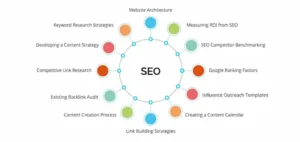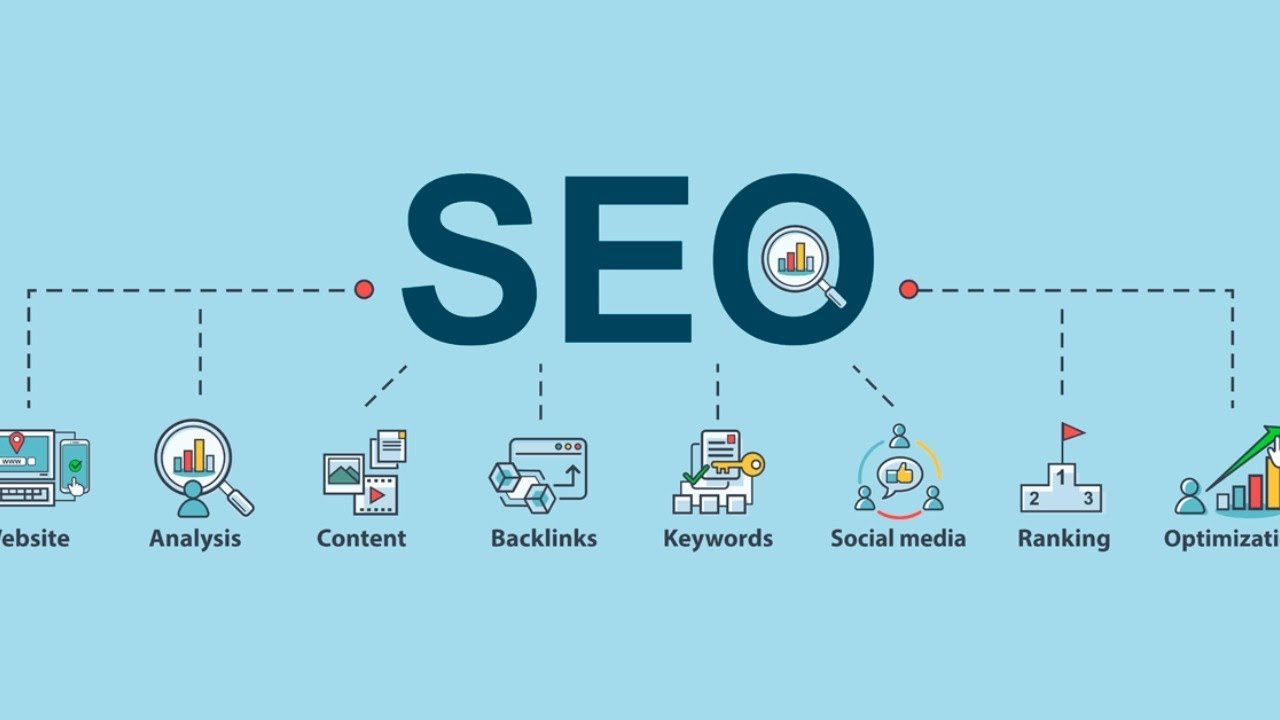Comprehensive Guide to Setting Up Local SEO.
Understanding the Problem:
How do I set up local SEO? Local SEO involves optimizing a business’s online presence to rank higher in search results for location-specific queries, such as “coffee shop near me” or “plumber in [city].” The problem of setting up local SEO often stems from a lack of understanding or implementation of key components, leading to poor visibility in local search results.
Components of Local SEO.
-
Google Business Profile (GBP) Optimization: Creating and maintaining a complete, accurate profile on Google.
-
Local Keyword Strategy: Targeting location-specific keywords relevant to the business.
-
Online Reviews and Ratings: Managing customer feedback to build trust and authority.
-
Local Citations: Ensuring consistent business information across online directories.
-
Website Optimization: Incorporating local signals (e.g., location-based content, schema markup).
-
Mobile Optimization: Ensuring the website is mobile-friendly for on-the-go searchers.
-
Local Link Building: Earning backlinks from local websites to boost authority.
Common Causes of Local SEO Issues.
-
Incomplete or Unclaimed GBP: Businesses fail to claim or fully optimize their Google Business Profile.
-
Inconsistent NAP (Name, Address, Phone Number): Discrepancies across directories confuse search engines and customers.
-
Lack of Local Keywords: Not targeting location-specific terms, leading to poor ranking for relevant searches.
-
Neglecting Reviews: Ignoring or mishandling customer reviews, which impacts credibility.
-
Poor Website Optimization: Websites lacking local content or not mobile-friendly.
-
Low Local Authority: Few or no backlinks from reputable local sources.
Consequences of Not Addressing Local SEO.

-
Reduced Visibility: Businesses fail to appear in Google’s Local Pack, Map Pack, or organic results for local searches.
-
Lost Customers: Potential clients choose competitors with stronger local presence.
-
Lower Trust: Inconsistent information or lack of reviews erodes customer confidence.
-
Missed Revenue: Fewer leads and foot traffic due to poor discoverability.
-
Competitive Disadvantage: Competitors with optimized local SEO dominate the market.
Step-by-Step Solution for Setting Up Local SEO:
Step 1: Claim and Optimize Google Business Profile
-
Action: Claim or create your Google Business Profile at business.google.com.
-
Details:
-
Verify ownership via phone, email, or postcard.
-
Complete all fields: business name, address, phone number, website, hours, categories, and description.
-
Add high-quality photos (storefront, interior, products/services, team).
-
Select a primary category that accurately reflects your business (e.g., “Italian Restaurant” instead of “Restaurant”).
-
Enable features like messaging, appointment booking, or product listings if applicable.
-
-
Tools: Google Business Profile dashboard, photo editing tools like Canva for professional images.
-
Tip: Update your profile regularly with posts, offers, or events to keep it active.
Step 2: Conduct Local Keyword Research
-
Action: Identify location-specific keywords relevant to your business.
-
Details:
-
Use tools like Google Keyword Planner, SEMrush, or Ahrefs to find keywords like “[service] in [city]” or “[product] near me.”
-
Analyze competitors’ keywords to identify gaps and opportunities.
-
Focus on long-tail keywords with lower competition (e.g., “emergency plumber in downtown Chicago”).
-
-
Tools: Google Keyword Planner (free), SEMrush, Ahrefs, Ubersuggest.
-
Tip: Prioritize keywords with high search volume and low difficulty for quicker wins.
Step 3: Optimize Your Website for Local SEO
-
Action: Incorporate local signals into your website.
-
Details:
-
Create location-specific landing pages (e.g., “Our Services in [City]”).
-
Embed a Google Map with your business location on the contact page.
-
Add schema markup (LocalBusiness schema) to help search engines understand your business details. Use tools like Schema.org or Google’s Structured Data Markup Helper.
-
Ensure NAP consistency with your GBP.
-
Optimize meta titles and descriptions with local keywords (e.g., “Best Pizza in Seattle | [Business Name]”).
-
Make your website mobile-friendly using responsive design.
-
-
Tools: Yoast SEO or Rank Math (for WordPress), Google’s Mobile-Friendly Test, Schema.org.
-
Tip: Use a content management system like WordPress for easy updates.
Step 4: Build and Manage Local Citations
-
Action: Ensure consistent NAP across online directories.
-
Details:
-
Submit your business to major directories like Yelp, Yellow Pages, Bing Places, and Apple Maps.
-
Use citation management tools like Moz Local or BrightLocal to audit and fix inconsistencies.
-
Focus on industry-specific directories (e.g., Healthgrades for doctors, TripAdvisor for restaurants).
-
-
Tools: Moz Local, BrightLocal, Yext.
-
Tip: Regularly audit citations to catch and correct discrepancies.
Step 5: Encourage and Manage Reviews
-
Action: Build a strategy to collect and respond to customer reviews.
-
Details:
-
Ask satisfied customers for reviews via email, SMS, or in-person requests.
-
Provide direct links to your GBP review form to simplify the process.
-
Respond to all reviews (positive and negative) professionally to show engagement.
-
Monitor reviews using tools like ReviewTrackers or Google Alerts.
-
-
Tools: ReviewTrackers, Podium, Google Alerts.
-
Tip: Create a review request template for staff to use consistently.
Step 6: Pursue Local Link Building
-
Action: Earn backlinks from local websites to boost authority.
-
Details:
-
Partner with local businesses, sponsor events, or join chambers of commerce for link opportunities.
-
Guest post on local blogs or news sites.
-
Get listed in local resource pages or directories.
-
-
Tools: Ahrefs or Moz for link prospecting, HARO (Help a Reporter Out) for media opportunities.
-
Tip: Focus on quality over quantity; one link from a reputable local site is worth more than many low-quality links.
Step 7: Track and Measure Performance
-
Action: Monitor local SEO performance to refine your strategy.
-
Details:
-
Use Google Analytics and Google Search Console to track website traffic and keyword rankings.
-
Monitor GBP insights for profile views, clicks, and calls.
-
Use tools like BrightLocal or SEMrush to track local rankings and competitor performance.
-
-
Tools: Google Analytics, Google Search Console, BrightLocal, SEMrush.
-
Tip: Set up monthly reports to identify trends and adjust tactics.
Real-World Example:
Case Study: A small bakery in Austin, Texas, struggled to attract local customers despite a strong in-store reputation. They implemented the following:
-
GBP Optimization: Claimed their Google Business Profile, added photos of their pastries, and posted weekly specials.
-
Keyword Strategy: Targeted “best bakery in Austin” and “cupcakes near me,” creating a landing page for “Austin Cupcakes.”
-
Citations: Fixed inconsistent NAP across Yelp and Yellow Pages using Moz Local.
-
Reviews: Sent post-purchase emails with a review link, increasing their GBP reviews from 5 to 50 in three months.
-
Local Links: Partnered with a local food blog for a guest post, earning a high-quality backlink. Result: Within six months, the bakery ranked in the top 3 for “bakery in Austin” and saw a 40% increase in foot traffic.
Preventing Future Issues:
-
Regular Audits: Conduct quarterly audits of GBP, citations, and website SEO using tools like BrightLocal.
-
Stay Updated: Follow Google’s algorithm updates via blogs like Search Engine Land or Moz.
-
Engage Locally: Maintain relationships with local businesses and communities for ongoing link opportunities.
-
Customer Feedback Loop: Continuously collect and respond to reviews to maintain credibility.
-
Mobile Optimization: Regularly test website performance on mobile devices using Google’s Mobile-Friendly Test.
Next Steps and Call to Action.
-
Start Today: Claim or update your Google Business Profile immediately to establish a foundation.
-
Audit Your Presence: Use Moz Local or BrightLocal to check for NAP inconsistencies.
-
Set Goals: Define measurable objectives, like ranking in the top 3 for a key local term within six months.
-
Invest in Tools: Sign up for tools like SEMrush or Yoast SEO to streamline efforts.
-
Act Now: Local SEO is a competitive space—delay means losing customers to competitors. Begin with Step 1 and work through each step systematically to see results.
Take control of your local visibility today. Optimize your Google Business Profile now at business.google.com and start attracting more local customers

1 thought on “How do I set up local SEO”